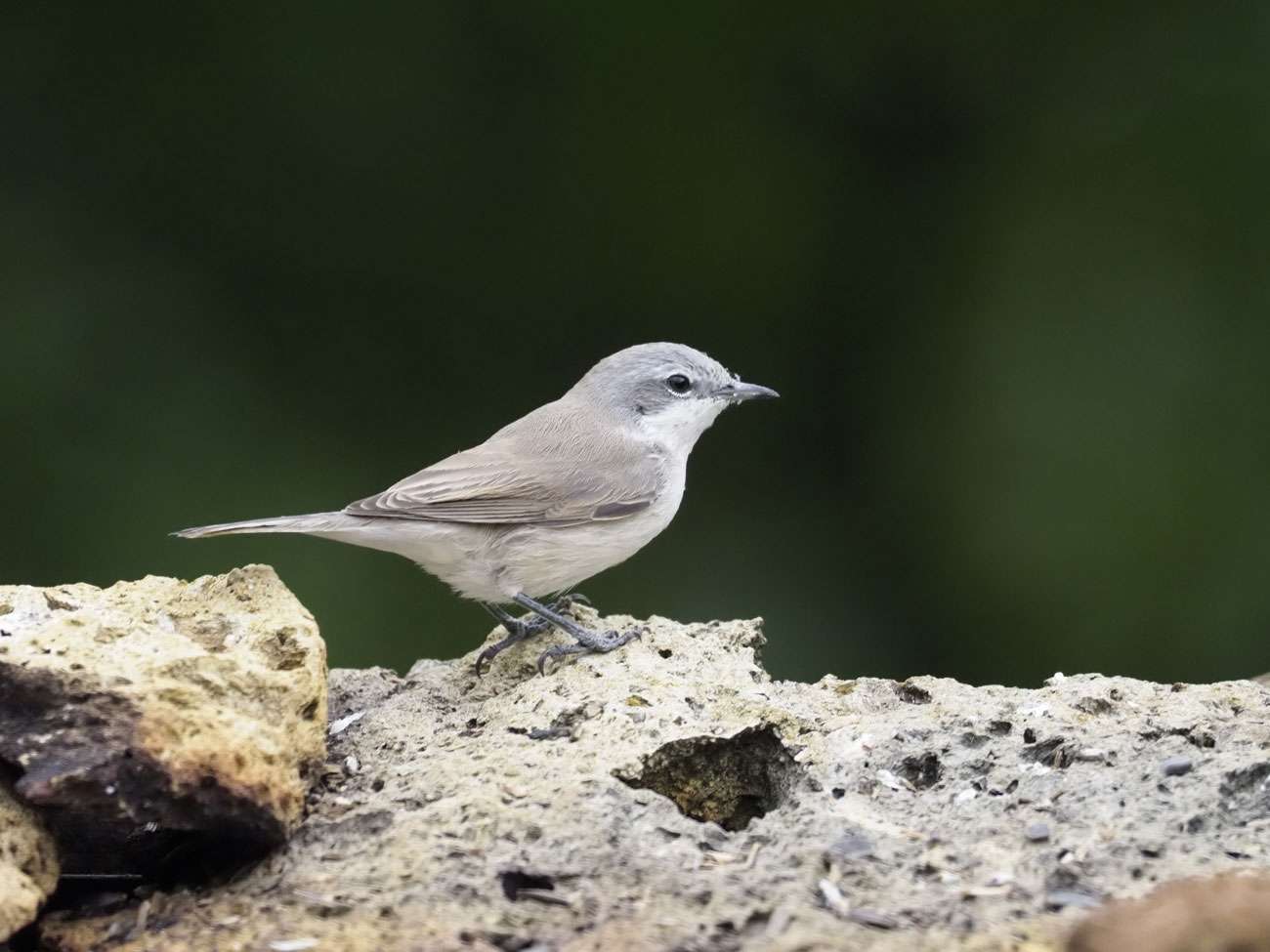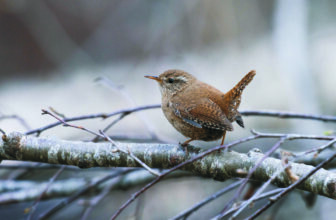
Lesser Whitethroat (Sylvia curruca)
‘Tut tut’
The voice came softly during one of those baking days of this endless summer. Then again: ‘Tut tut.’
Well, I’ve got used to being tutted at but this was a most welcome intrusion. The call sounded a bit like a ‘ticking’ Wren – but I had high hopes of something far more unusual.
And I was not disappointed. Out from a hawthorn bush at the bottom of the garden popped a small, slender warbler.
He had a brownish back, black legs, white underparts and outer tail, and a grey hooded appearance stretching down to the upper neck and below the eye. The bird was also wearing a pair of triangular charcoal grey ‘earphones’. We call these the ear coverts. Plus, it displayed a clean, milky-white throat.
Lesser Whitethroat! Within a couple of seconds this very scarce visitor to the village had flitted to the adjacent rose arch where he began picking half a dozen orange berries from a withering honeysuckle.
He had to have more than a few goes to pull off some of those tough fruits so I was able to watch him well through my ‘bins’ and enjoy a rare
garden spectacle.
It had been almost 14 years to the day that my only previous garden record of this species had put in a surprise appearance.
The Lesser Whitethroat is now so hard to find in the Cranleigh area that years often pass without me seeing one. Finding one in Surrey is also increasingly tough. They are one of the most skulking of birds, preferring to stay low in a prickly hedgerow for most of the time.
No wonder most people have not seen one. Even if they do show up there is usually little time for identification. The bird tends to do a quick disappearing act down into its hermit home below the spikes and dense leaves. There it forages for invertebrates.
But it is a different story in the Spring when you can ‘catch’ them early, just after they have arrived following an arduous long-distance migration from the north east of Africa. They journey up over the Mediterranean Sea, through the countries bordering the Adriatic, then across Europe to southern England.
Then the newly arrived males rejoice with singing – well, wouldn’t you? Their song is an oft-repeated, drawn out rattle and carries 100 metres or more.
Last April I was determined to find one locally because previously faithful sites were no longer producing the goods and had not been doing so for many seasons.
I used my usual method for trying to find one. Drive around the country lanes very early in the morning before traffic is about. Open the windows wide and listen for the music.

Common Whitethroat (Sylvia communis)
This year I was rewarded. A fella was singing for all he was worth. I parked up and eventually traced him to some dense cover. As soon as I got near he went silent but after a few minutes he thought better of keeping quiet and risking losing a much-needed female in the vicinity. He flicked up to the top of a silver birch tree, and then an oak, and rattled away with glee.
That took me back to 1998 when Lesser Whitethroat was easier to connect with. I found two in Cranleigh while doing a breeding bird survey for the British Trust for Ornithology (BTO). Surrey had dozens of volunteers who were each surveying grid squares but these two singing males in our village were the only records of this species to be found. They have sadly declined in this county ever since.
Lesser Whitethroats sing for only a short while so you must find them early during their stay. Once the females turn up they are likely to shut up shop and you may not hear them so easily again. Unless, like me, you get a ‘tut tut’ as they begin their migration south.
My garden visitor – or was it another? – first turned up on 7 July. Nearly three weeks later I heard a Lesser Whitethroat call again and because of the time lag I reasoned it was surely another bird. This time he graced us with his presence for three whole days, often feeding in the open only 20 feet away. Then he would disappear and drop in again every few hours for another tasty snack.
I thought he might well stay for a good few more days, until the berries had all gone. But you will remember the end of the drought brought two days of stormy weather and he probably decided to move on to get out of the way.
It’s nice to think the fat he put on in my garden helped give him the fuel he needed for the long journey south. Over the last few weeks I’ve often wondered how he is getting on.
All being well, at the beginning of October, he is still en route to his winter quarters. So I would expect him to possibly be in Egypt or Israel, where I have seen a variety of races of this species in the Negev Desert.
By mid-month he could be back in his second home in Sudan, or Chad. I can’t help but give a little ‘tut’ myself in recognition of this tiny bird’s tenacity and power of endurance.
So – if there’s a Lesser Whitethroat, how about a Greater Whitethroat? Indeed, there is such a bird although it is just known as the Whitethroat, or – officially – Common Whitethroat.
As you might expect, it is a more common visitor and passage migrant to Cranleigh and the Surrey Hills. It calls with a ‘tack’ rather than ‘tut’, has rich ginger wings, and displays more openly.
But it is less common than it was and its numbers have been down in 2018. Interestingly it has a totally different migration strategy to the Lesser and nips down to Africa on the western route, via France, Portugal and Spain.
One ringed Ewhurst bird’s flight unfortunately came to a sticky end when it was found in a car radiator in Reading, after a journey from Fleet in Hampshire. I’ll be writing on the wider fate of the Common Whitethroat in a future issue of Cranleigh Magazine.
Click here to see all of Robin Stride’s previous Crane Spotters











